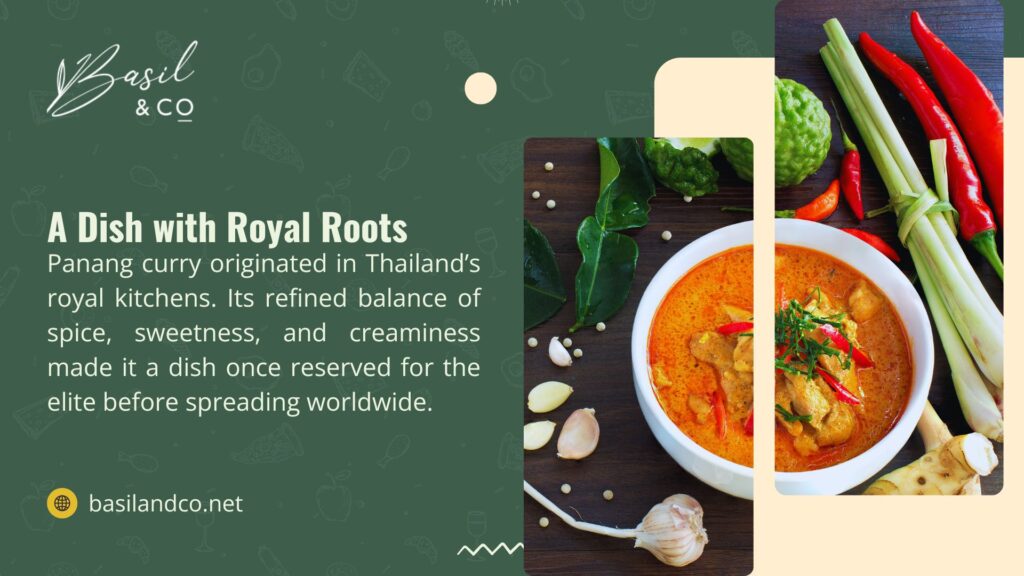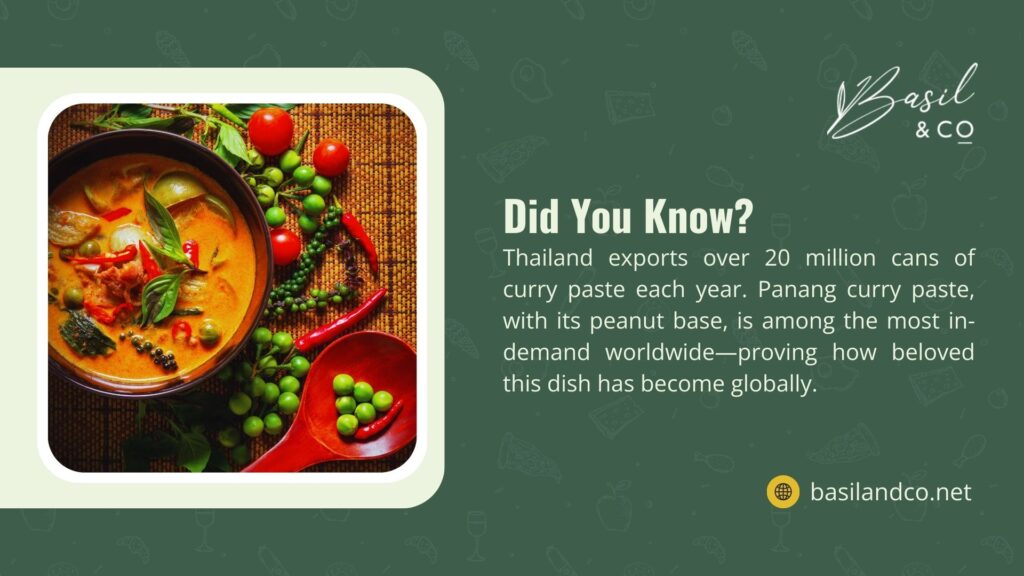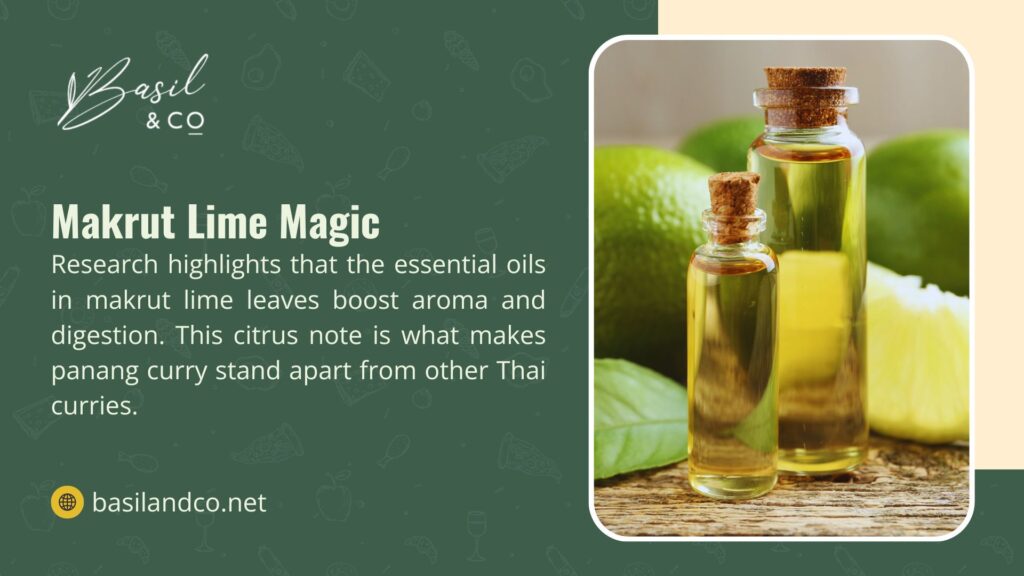Panang curry hits different than other Thai curries. Most people know pad thai, maybe some green curry, but panang curry is where things get interesting. This dish is basically Thailand’s answer to comfort food – thick, rich, and packed with flavors that make you wonder why you ever bothered with takeout.
There are over 10,000 Thai restaurants in America, even though Thai people make up less than 0.1% of the population. That’s how good this food is. And panang curry? It’s one of the most popular dishes on every menu.
What Makes Panang Curry Recipe Taste So Good
Most panang curry recipe attempts fail because people don’t understand the basics. This isn’t about throwing coconut milk in a pan and hoping for the best. The magic happens with the curry paste – specifically, the roasted peanuts that get ground right into it.
Real panang curry uses minimal vegetables. Forget what your local Thai restaurant does with all those bell peppers and broccoli. Authentic versions focus on the meat and maybe some Thai basil. That’s it. The star is supposed to be the makrut lime leaves.
This is completely different from Thai green curry or Thai red curry, which are basically vegetable soups with curry flavor.

Getting the Right Stuff for Your Panang Curry Recipe
Here’s what actually matters for a decent panang curry recipe:
The Non-Negotiables:
- Proper panang curry paste (Maesri brand if you can find it, Aroy-D if you can’t)
- Real coconut milk (the thick stuff, not that watery light nonsense)
- Makrut lime leaves (sometimes called kaffir lime leaves)
- Fish sauce that doesn’t smell like death
- Palm sugar (brown sugar works too)
Protein That Makes Sense:
- Pork shoulder, sliced thin (this is traditional)
- Chicken thighs (breast meat gets rubbery)
- Good shrimp
- Decent beef sirloin
Everything Else:
- Garlic that’s fresh
- Shallots or small onions
- Thai basil for the end
The curry paste situation is important. Making it from scratch involves finding galangal, dried chilies, lemongrass, and a bunch of other stuff that most grocery stores don’t carry. Save yourself the headache and buy good paste. Just read the ingredients – if it mentions peanuts, you’re on the right track.

How to Make Panang Curry
- Slice everything before you start cooking because this panang curry recipe moves fast once you begin. Cut the protein thin – maybe quarter-inch strips. Take those lime leaves and crush them up in your hands until they smell amazing. This releases the oils.
- Put oil in a big pan over medium heat. Add about 3 tablespoons of panang curry paste. Cook this paste for a few minutes while stirring constantly. It’s going to smell incredible, and the color will change from bright red to darker red-brown. The paste will start separating from the oil. That’s when you know it’s ready.
- Pour in a can of coconut milk slowly while stirring. Don’t just dump it all in or you’ll get lumps. The whole thing should turn this beautiful reddish-brown color. Add fish sauce (about 2 tablespoons), palm sugar (1 tablespoon), and those crushed lime leaves.
- Let everything come to a gentle simmer. Add your protein and cook until it’s done – maybe 8 minutes depending on what you’re using. The sauce will get thicker as it cooks.
- Turn off the heat and throw in some Thai basil leaves. Taste it. Need more salt? Add fish sauce. Too salty? Add sugar. The finished curry should be thick enough to coat the back of a spoon but not so thick it won’t pour.
Serving This Panang Curry Recipe Right
Serve the panang curry recipe over jasmine rice. Not brown rice, not quinoa, not cauliflower rice. Plain white jasmine rice that can handle the rich sauce.
In Thailand, people serve the rice on the side and add small spoonfuls to their curry as they eat. This keeps the rice from getting soggy and lets everyone control their rice-to-curry ratio.
Want to do the full Thai experience? Add some Thai vegetable dishes or fresh spring rolls. The curry is rich and heavy, so lighter sides help balance everything out.
Making Changes to Your Panang Curry Recipe
Vegetarian Version
Skip the fish sauce and use soy sauce instead. Use vegetarian curry paste (check the label – many contain shrimp paste). Replace the meat with firm tofu or a mix of vegetables like eggplant, mushrooms, and bell peppers.
Different Proteins
Pork is traditional, but this panang curry recipe works with almost anything. Thai chicken dishes often use panang curry as a base. Shrimp cooks fast and tastes great with the peanut flavors in the paste.
Leftovers and Meal Prep
This panang curry recipe actually gets better after sitting in the fridge overnight. The flavors blend together and intensify. It’ll keep for about a week in the refrigerator.
When reheating, add a splash of coconut milk if it’s gotten too thick. Heat it gently – don’t blast it in the microwave or the coconut milk might separate.
For meal prep, you can make the curry base (everything except the protein) ahead of time and store it for a few days. Then just add your protein and cook it when you’re ready to eat.

Try Real Thai Flavors at Basil & Co
Basil & Co brings real Thai flavors straight to your door. The chefs know what they’re doing – they use authentic ingredients and traditional techniques that deliver the complex flavors Thai food is known for. Order from Basil & Co and see why people throughout Southern California choose this spot for authentic Thai food. From Brea to Pomona, quality Thai food gets delivered to neighborhoods across the region.


